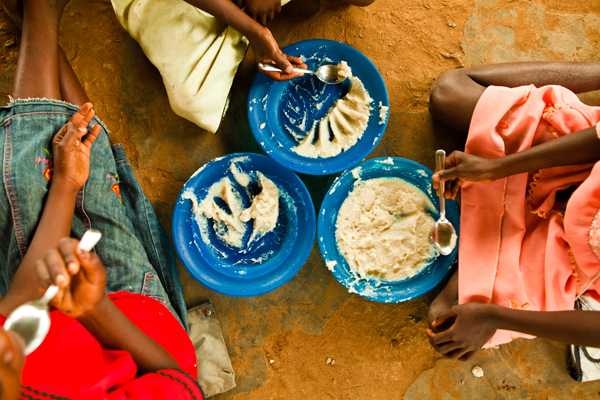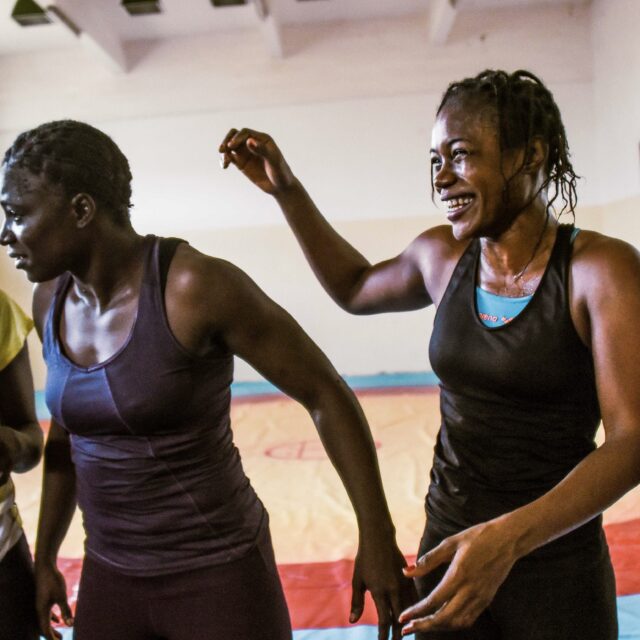By Arathi Rao, ONE’s Policy Manager, Agriculture and Nutrition

Children at Mawango School in Malawi eating a mid-morning snack of porridge, supported by the World Food Programme. Photo: Morgana Wingward
Last week world leaders pledged more than $4 billion to global nutrition programs and committed to save 20 million children from malnutrition at Nutrition for Growth, a pre-G8 event, in London. Now that these ambitious targets have been set, and tremendous resources have been mobilised to accomplish this goal, one question remains:How do we actually get there?
Fortunately, we have an incredibly useful tool in our hands: The 2013 Lancet Series on Child and Maternal Nutrition,a set of reports that highlights the evidence behind what works in nutrition and who needs our urgent attention.
The 2013 Lancet report updates and expands the landmark 2008 series on nutrition that identified a set of proven, cost-effective interventions designed to improve nutrition in the first 1,000 days of a child’s life. Here are some of this year’s report’s biggest takeaways for the international community as it strives to reduce the number of chronically undernourished children by 20 million by 2020:
Prioritise the 1,000-day window: 3.1 million children die every year due to malnutrition. An additional 165 million children who manage to survive malnutrition in their early years experience stunted growth and cognitive development, undermining their future productivity and therefore income. We need to focus on nutrition of mothers and children during a child’s first 1,000 days, an effort that can have long-term consequences for growth, health and intellectual capacity.
Bring girls’ health into focus: More than one in four children born in low- and middle-income countries are underweight for their age. In addition, most pregnant women living in these countries cannot access nutrition services until the fifth or sixth month of their pregnancies, if at all. As a result, their children start their lives already malnourished. If we prioritise the health of women and girls, we can boost general nutrition, reduce pregnancy complications and boost fetal growth and development.
Expand reach through community health workers: Community health worker programs offer a prime opportunity to increase already successful nutrition programs’ coverage and provide services to populations who presently lack access. Several countries, including Ethiopia, have already started investing in community health worker programs to promote maternal and child health and nutrition with great success. Community health workers hold great promise to bring nutrition services to those most vulnerable to malnutrition, and their capacity to carry out this work should therefore be strengthened.
Align other sectors with nutrition goals: It seems common sense that agriculture, social safety nets and other important sectors could also play a role in advancing nutrition progress. Yet until this point, these programs have often not been designed, implemented or evaluated with improved nutrition outcomes in mind. Going forward, countries should take the opportunity to better integrate nutrition goals into these sectors. Donors should also support rigorous impact evaluations and studies to build a richer evidence base of what works with nutrition-sensitive approaches in agriculture, social safety nets and other sectors.
Devote funding to nutrition programs: The economic toll of malnutrition, on individuals and even countries, is astonishing. Malnutrition can rob individuals of up to 10 percent of their annual earnings and cost African countries up to 11 percent of their annual GDP. The good news is malnutrition solutions offer sound investments for countries’ futures. However, many national nutrition plans are only 20 percent funded. Countries must start prioritising nutrition programs within their national budgets.
Sustain global commitment: Progress towards reducing malnutrition will require a steadfast commitment from the international community. USAID recently pledged $1 billion for nutrition-specific interventions and nearly $9 billion for nutrition-sensitive activities for 2012 to 2014, and other countries have similarly stepped up their commitments.
Moving forward, donors will need to show patience in awaiting outcomes of nutrition programmes, as results cannot be clearly measured until a child’s second birthday. We also need to hold policymakers accountable to their commitments to nutrition progress and harness the global momentum on nutrition to produce more effective programs.



